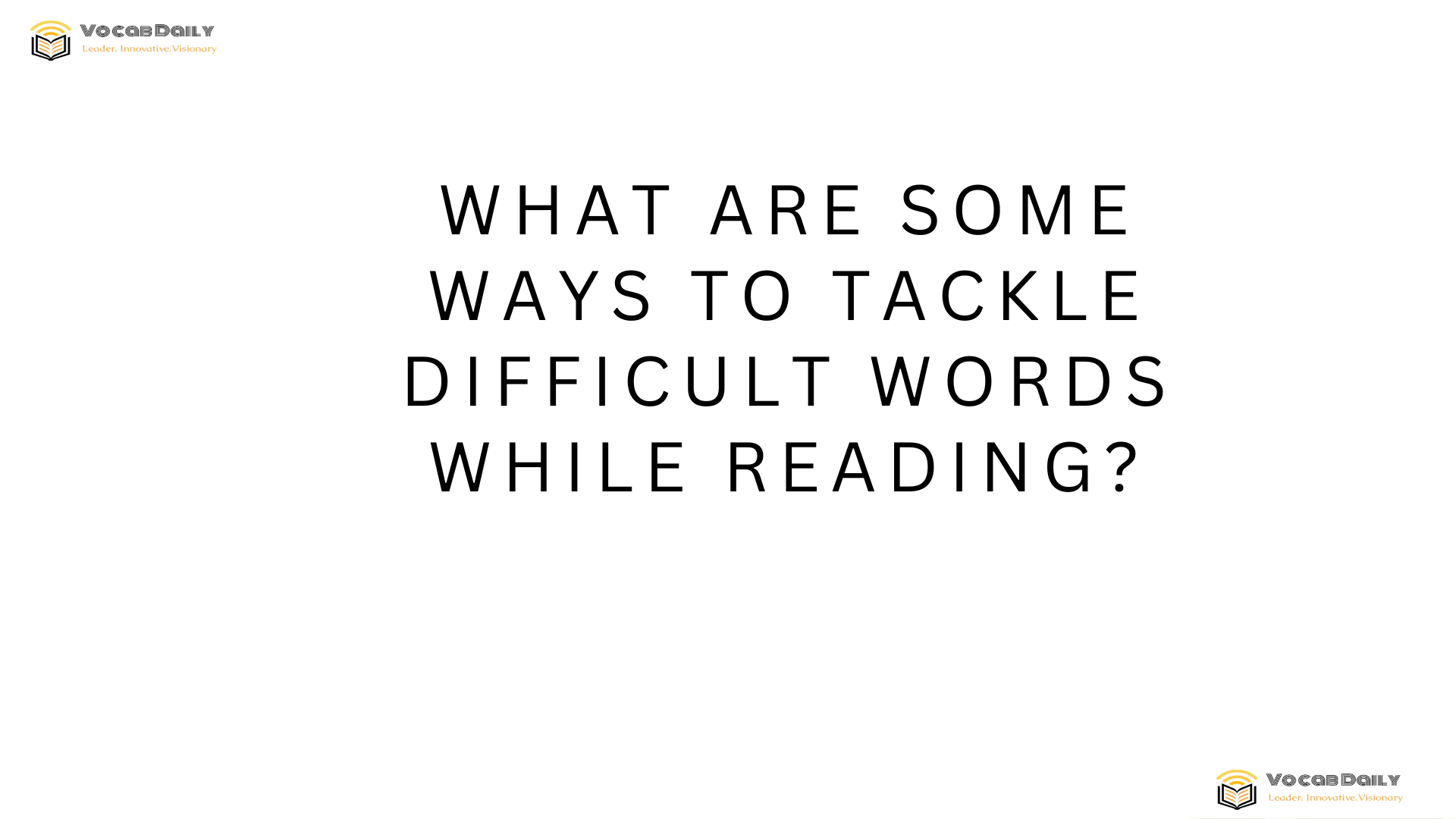What are some ways to tackle difficult words while reading
Context Clues: Unlocking Meaning in Sentences
One of the most effective ways to understand difficult words while reading is to use context clues. These are hints provided within the sentence or surrounding sentences that help reveal the meaning of an unfamiliar word. For example, the definition might be directly explained, or synonyms and antonyms may be present nearby. Readers can look carefully at how the word is used and make logical guesses about its meaning. This strategy not only builds vocabulary but also encourages critical thinking.
Breaking Down Words into Parts
Many complex words can be made more approachable by breaking them down into smaller parts such as prefixes, suffixes, and root words. Recognizing common prefixes like “un-,” “re-,” or “pre-” and suffixes like “-tion,” “-ly,” and “-ment” helps in deciphering unfamiliar words. Understanding the root word gives a basic meaning, while the prefix or suffix modifies that meaning. This technique allows readers to piece together what the word likely means without needing a dictionary each time.
Using a Dictionary or Digital Tools
Consulting a dictionary remains a tried-and-true method for learning new words. With the help of print or online dictionaries, readers can find clear definitions, pronunciation guides, and examples of use. Additionally, digital tools such as vocabulary apps or browser extensions can offer quick word lookups and even save words for later study. While overreliance on dictionaries may slow reading pace, strategic use of these tools enhances word comprehension and retention.
Re-reading and Taking Notes
Sometimes, reading a passage more than once can shed light on difficult words. Re-reading allows readers to absorb additional context and internalize meaning more deeply. Taking notes while reading, such as jotting down guesses for unfamiliar words or noting where they appear, is also helpful. This practice encourages active engagement with the text and reinforces learning by connecting new vocabulary to the reader’s memory.
Using Illustrations and Visuals
When reading books, especially for younger readers or learners, illustrations and visuals can provide important clues about difficult words. Pictures related to the text often demonstrate what a word means without needing a formal definition. Graphic organizers or mind maps can also be used by readers to connect new words with images or related ideas, making vocabulary growth more interactive and enjoyable.
Asking Questions and Discussing with Others
Engaging in discussions about reading material can lead to better understanding of difficult words. Asking teachers, peers, or family members to explain unfamiliar vocabulary fosters a collaborative learning environment. Group reading sessions and book clubs provide opportunities to hear how others interpret challenging words and phrases. This social approach often increases motivation and provides varied perspectives on vocabulary use.
Using Word Maps and Flashcards
Creating word maps is an interactive way to explore a word’s meaning, synonyms, antonyms, and usage examples. Flashcards also serve as effective study tools, helping reinforce memory through repetition. Both techniques encourage active learning and make vocabulary practice more organized. By separating challenging words into manageable study units, readers can build confidence and improve their language skills over time.
Connecting New Words to Personal Experiences
Relating unfamiliar words to personal experiences or knowledge enhances retention. When readers associate words with something meaningful or familiar, it creates stronger mental connections. For example, linking the word “bustle” to a busy day at a marketplace helps internalize its meaning. This method makes vocabulary learning more relevant and enjoyable, increasing the likelihood of using new words confidently in everyday language.
Reading Widely and Regularly
A broad and consistent reading habit naturally exposes readers to a variety of words in different contexts. Regular reading across genres—fiction, nonfiction, newspapers, and magazines—encourages encountering unfamiliar vocabulary repeatedly. Seeing a word many times in diverse situations aids in understanding and remembering it. Over time, this practice builds a strong and versatile vocabulary foundation.
Maintaining a Personal Vocabulary Journal
Keeping a vocabulary journal where difficult or interesting words are recorded provides a personalized resource to revisit. Word meanings, sample sentences, and related notes can be included. Reviewing the journal regularly supports memory retention and tracks progress. This habit turns vocabulary building into an ongoing project, making the learning process more intentional and rewarding.
Also check out VocabDaily workbook collections.

Leave a Reply